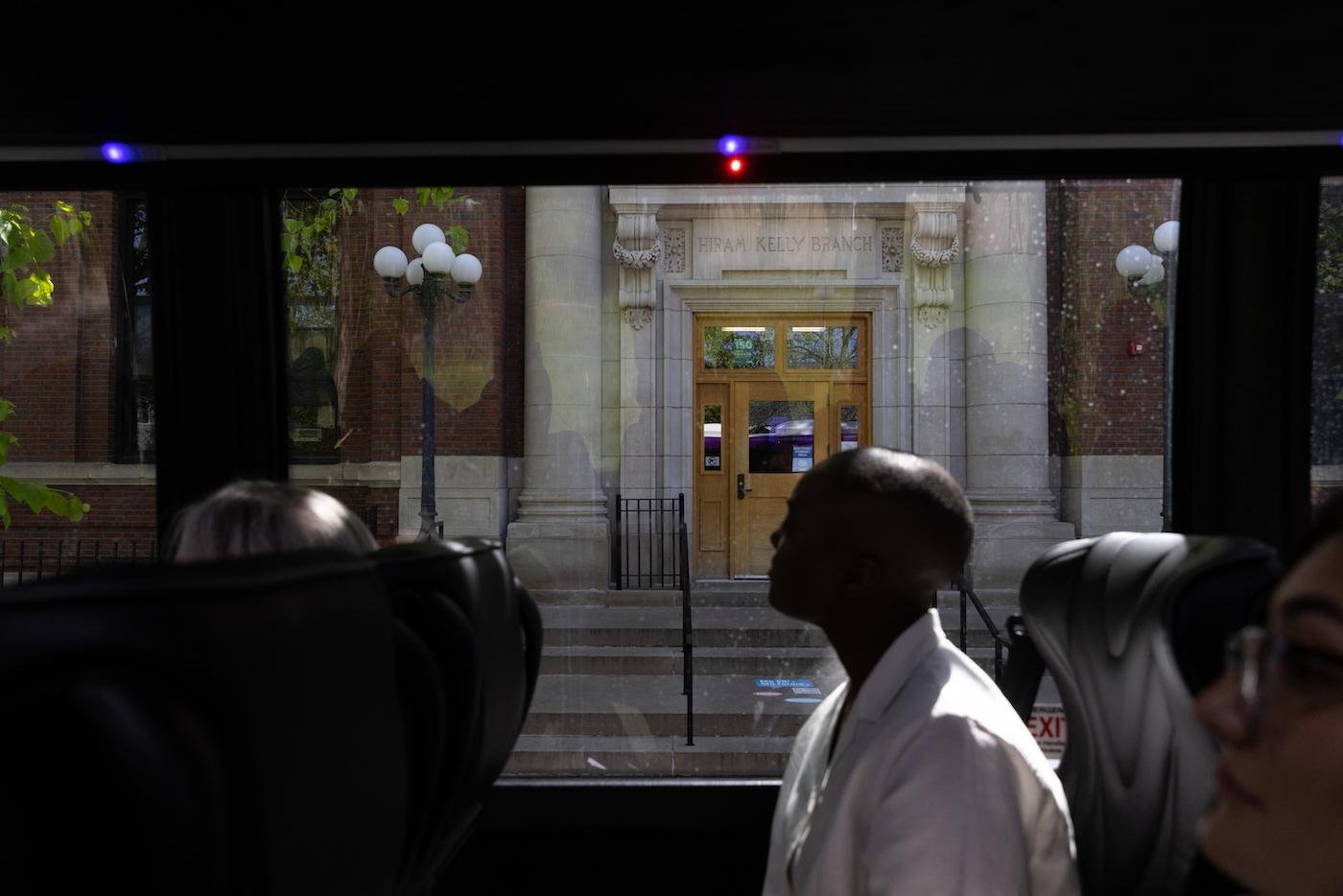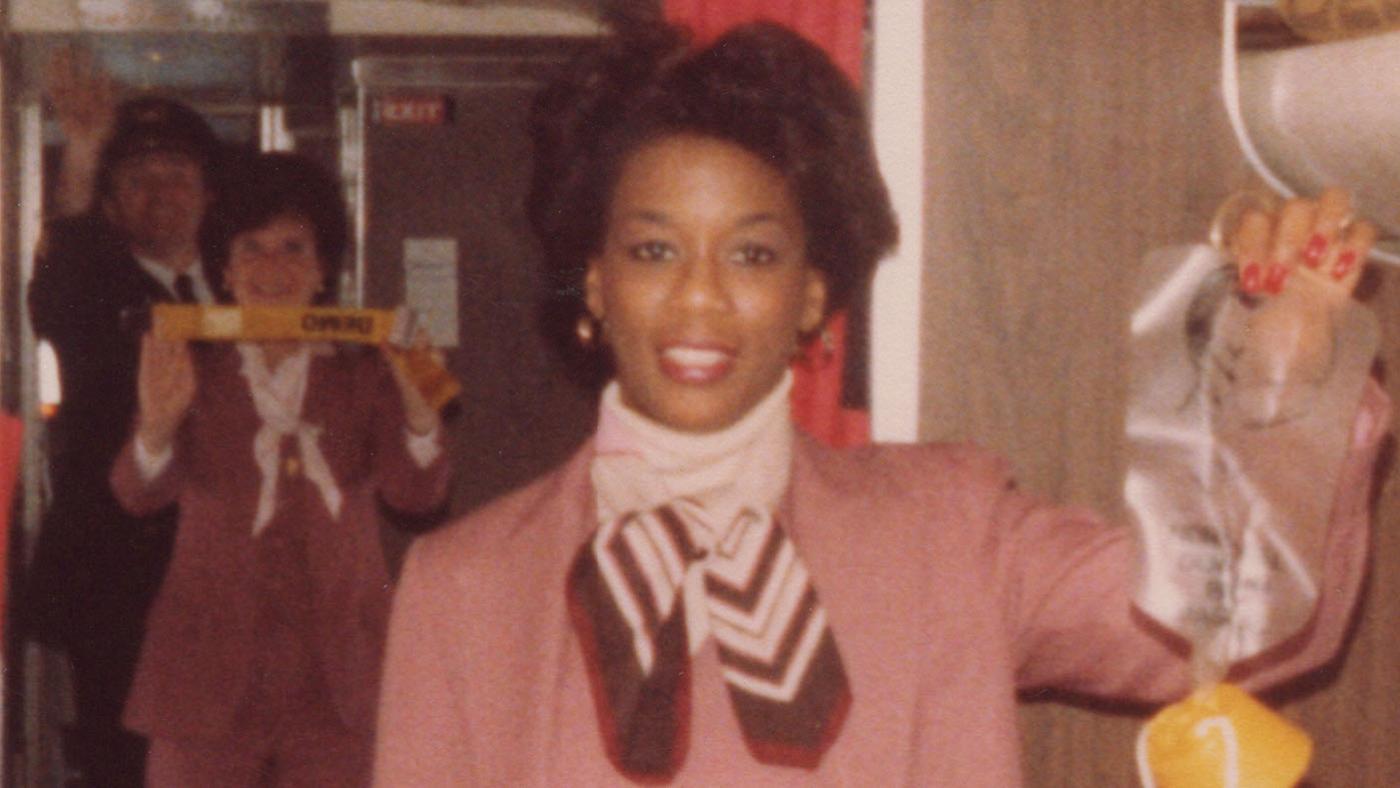Bus Tour Encourages Chicagoans to "Disrupt Segregation" By Visiting All Neighborhoods
Daniel Hautzinger
May 15, 2023

Segregation prevents you from knowing people. That’s the animating idea behind Tonika Lewis Johnson’s Folded Map Project, which recently organized the first of several “Disrupting Segregation” bus tours in partnership with Chicago’s Office of Equity and Racial Justice and the popular historian Shermann “Dilla” Thomas.
“You can understand another person’s perspective when you see their neighborhood and what it’s like to live there,” Johnson said. The Folded Map Project is meant to help engender that understanding, in part by pairing “map twins,” people who live at mirror addresses on the North and South Side, to allow someone from Edgewater to connect with someone from Englewood, for example.
The tour recently gathered representatives from city agencies, nonprofits, community organizations, schools, and other places to visit Englewood and Lincoln Park, two disparate neighborhoods that provide an opportunity to reflect on the differences between them—and why those differences exist.
“It’s a hard sell, getting people out of their neighborhoods—especially when they’re told to not come to neighborhoods like Englewood,” Johnson said.

The bus tour embodied a Folded Map action kit created in partnership with the city that is meant to help Chicagoans get a glimpse of life in a neighborhood that is racially different from their own and reflect on their experience there.
The tour started in the parking lot of what was until recently a Whole Foods but is now a Save A Lot, despite the objections of many residents, due to Save A Lot’s bad reputation among some Chicagoans. The bus later took everyone to a different Save A Lot, with Johnson encouraging everyone to explore the store and reflect on its offerings, cleanliness, and appearance.
After visiting the store, tour participants shared their thoughts on it, observing that it lacked a deli counter or fresh fish, had dim lighting on the meat and limited produce selection, and a difficult-to-navigate parking lot.
Thinking about the quality and proximity of grocery stores in a neighborhood is just one of the exercises the Folded Map action kit suggests. It also encourages a resident to observe the availability of restaurants, and what kind of food they serve; where you can get cash; the ease of using transit; and the quality of the parks, sidewalks, and libraries. It also encourages people to look for something beautiful in every neighborhood.

Those exercises work for both residents of affluent communities exploring a disinvested community and vice versa. “I don’t want residents to feel like they need to attack other people for where they live,” Johnson said. “You might understand why someone in a neighborhood that has everything doesn’t leave that neighborhood.”
But the tour and the Folded Map action kit are not just about understanding the perspective of a resident of a racially different neighborhood. They are also about understanding why the experience of living in that neighborhood is different.
As the bus drove past vacant lots in Englewood, Thomas encouraged people not to think, “Why aren’t they building there?” but rather to consider what was there before, and why it hasn’t been replaced. Offering historical anecdotes about locations in Englewood, he explained the practice of redlining, whereby the value of housing in predominantly Black neighborhoods was deemed low by the Federal Housing Authority, thus preventing residents from accessing bank loans or insurance. (The concept of redlining is currently illustrated just outside of Englewood in Washington Park by fields of red tulips planted by the artist Amanda Williams and associates in the footprint of lost buildings, as Thomas pointed out.)
Thomas also pointed out the Kelly branch of the Chicago Public Library in Englewood, which he said was the city’s second library branch, built in the neighborhood when it was populated by white residents. “Would Englewood get the second library today?” he asked.

“I just objectively really feel like having a historical understanding of why a space looks like it looks today will help you better determine what you do with it today,” he said.
Johnson wanted to include Thomas on the tour both to help illustrate the larger systemic issue of segregation via history, but also because, she said, “as much as I’d like to think people know me, we all know they know Dilla,” who has more than a hundred thousand followers on TikTok, and tens of thousands on Instagram and Twitter.
Thomas offers tours of South and West Side neighborhoods under the name Chicago Mahogany—his bus was used for the Folded Map tour—but Candace Moore, Chicago’s first Chief Equity Officer, emphasized that “you don’t need a bus to do this.” There will be more Folded Map tours over summer, and the action kit is available for anyone to use on their own.
In Lincoln Park and Old Town, the tour visited the Black-owned Sweet Vegan Bakes to hear its owner Cheryl Nelson, a West Side native, explain why she decided to open on the North Side despite her desire to have a business in her home neighborhood. She searched the West Side for a suitable location, but in the end decided that she “didn’t want to be next to five liquor stores,” she said—although she still harbors a dream of eventually opening an outpost there.

Thomas argued that the success of businesses across the city, including in disinvested neighborhoods, could help the whole city. “I say all the time, a rising tide raises all ships,” he said. “For [Chicago] to do better we have to start paying more attention to the marginalized spaces…Taxes are a zero net gain. The city says, we need this amount of money to operate. If we can’t get it from the residential and sales tax from the South and West Side, then we’re going to [increase taxes] on businesses in Lincoln Park and Wicker Park.”
One of his solutions as an individual resident is to frequent small businesses in other neighborhoods. “In order to be a dope Chicagoan, spend $25 in a neighborhood you don’t live in every month,” he suggested.(Downtown doesn’t count.)
It’s another way for Chicagoans to get out of their neighborhoods and “disrupt segregation.”
“You all represent the beauty of this city, the diversity of the city,” Johnson told the tour. “I know what’s possible, and I want you all to become advocates as to what’s possible.”







